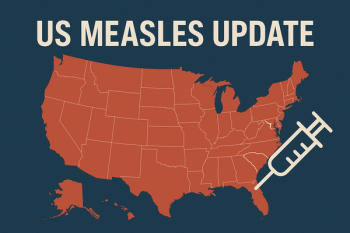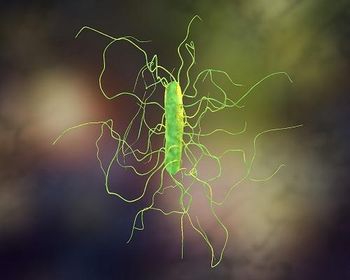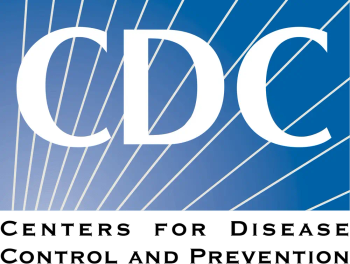A single, low dose of primaquine added to artemisinin-based combination therapy (ACT) reduces malaria transmission across age groups and regions with different transmission rates with low risk of the hemolytic anemia adverse reaction associated with higher dosing, in the findings of a recent meta-analysis1 of individual patient data.
The meta-analysis of more than 6000 patients from 23 studies in 16 countries provides, according to the investigators, "robust support for the very good safety and efficacy of single low-dose primaquine for P falciparum transmission blocking, in all age groups and in areas of low and moderate-to-high transmission intensity."
"This finding highlights the urgent need for a pediatric primaquine formulation," declared Daniel Yilma, MD, Clinical Trial Unit, Department of Internal Medicine, Institute of Health, Jimma University, Jimma, Ethiopia, and colleagues. "Particularly given the higher prevalence of gametocytes in young children, and the risks associated with administering inappropriately high doses when giving adult formulations to young children."
The investigators reported no statistically significant difference in the effect of a single low-dose (0.2 to 0.25mg/kg) primaquine addition to ACT on gametocyte positivity in young children (<5 years of age) compared with older children (5 to <15 years) (adjusted odds ratio [aOR] 1.08, 95% CI 0.22-0.52) and adults (0.50, 0.20-1.25); or between low- or moderate-to-high transmission settings (1.07, 0.46-2.52).
Gametocyte clearance was also similar for different ACTs (dihydroartemisinin-piperaquine vs artemether-lumefantrine).The investigators did find, however, that patients receiving a primaquine dose of less than 0.2mg/kg were more likely to have gametocytemia with the former ACT than the latter.
There was no increase in anemia-associated declines in hemoglobin concentration (>25%) at a primaquine dose of 0.25mg/kg regardless of age group, transmission setting, or glucose-6-phosphade dehydrogenase (G6PD) status.The investigators also report no difference in adverse events of grade 2 or higher or serious adverse events between primaquine and no-primaquine cgroups, including in young children.
Yilma and colleagues note that the WHO had initially recommended addition of a single low dose of 0.25mg/kg to ACT in regions with partial artemisinin resistance, but later limited it to areas of low-transmission.The revised recommendation was based on concern that treatment of detected infections in regions of moderate to high transmission intensity could hasten development of resistance in large reservoirs of asymptomatic parasite carriers.
What You Need to Know
A single low dose (0.2–0.25 mg/kg) of primaquine added to ACT significantly reduces malaria transmission without increasing the risk of hemolytic anemia, even in children and individuals with G6PD deficiency.
The transmission-blocking benefits of primaquine are consistent in both low and moderate-to-high malaria transmission regions, challenging previous WHO limitations on its use in higher transmission areas.
Given the high prevalence of gametocytes in young children and the risks of using adult doses, the study emphasizes the need for a child-appropriate formulation of primaquine to ensure safe and accurate dosing.
Rather than limiting primaquine usage in these regions, Yilma and colleagues argue that control of asymptomatic infections is best achieved through integrated vector control and preventive treatment strategies that are not artemisinin-based such as vaccines and seasonal malaria chemoprevention.
The investigators point out that while this is the largest analysis to date on the safety and efficacy of single low-dose primaquine for P falciparum malaria transmission blocking, several questions remain, including the safety and efficacy of repeated single low-dose primaquine for recurrent infection.
In accompanying, invited commentary, Thomas Hänscheid, MD, PhD and Martin Grobusch, MD, PhD, Center for Tropical Medicine and Travel Medicine, Department of Infectious Diseases, University of Amsterdam, Amsterdam, Netherlands, suggest that the apparent safety of low dose primaquine in young children should obviate the need for pre-treatment testing for G6PD deficiency, which had been advised to guard against adverse drug reaction.2
"The authors' comprehensive evaluation strengthens guidance on balancing the transmission-blocking advantages of primaquine against hemolytic risks," they remark.
References
1. Vilma D, Stepniewska K, Bousema T, et al. Safety and efficacy of single-dose primaquine to interrupt Plasmodium falciparum malaria transmission in children compared with adults: a systematic review and individual patient data meta-analysis. Lancet Infect Dis. 2025; published online April 23. https://doi.org/10.1016/S1473-3099(25)00078-7.
2. Hänscheid T, Grobusch MP. Balancing safety and efficacy: new insights on primaquine for malaria transmission blocking. Comment. Lancet Infect Dis. 2025; published online April 23. https;//doi.org/10.1016/S1473-3099(25)00117-3.






















































































































































































































































































